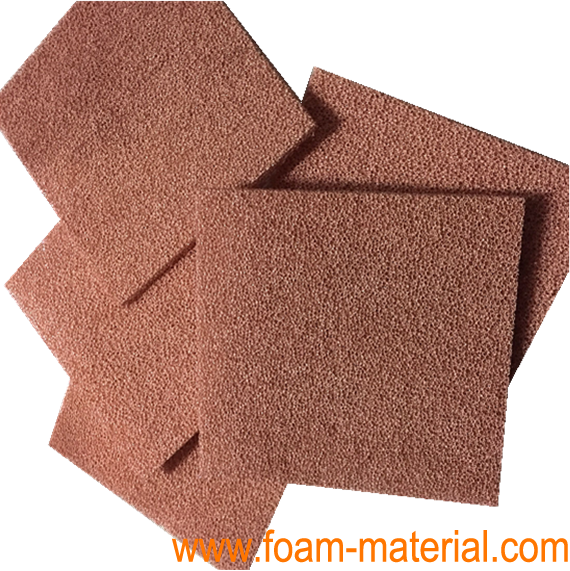Nickel Foam Electrode: A High-Performance Material for Energy Storage and Electrochemical Applications
The nickel foam electrode is a highly porous material used as an electrode in various electrochemical applications, including batteries, fuel cells, supercapacitors, and electrolysis systems. Its unique combination of high surface area, excellent electrical conductivity, and mechanical strength makes it a preferred choice for advanced energy storage and conversion technologies.
● What Is Nickel Foam?
Nickel foam is a porous structure made of pure nickel or nickel alloys. It features a 3D interconnected network of pores, providing a high surface area-to-volume ratio. This structure is ideal for electrochemical reactions, where maximizing active surface area can significantly enhance performance.
● Key Properties of Electrode Metal Foam
1. High Surface Area
- The foam structure increases the surface area, enhancing the active sites for electrochemical reactions.
2. Excellent Electrical Conductivity
- Nickel is an excellent conductor, ensuring efficient charge transport during electrochemical processes.
3. Corrosion Resistance
- Nickel resists oxidation and corrosion in various chemical environments, making it suitable for long-term applications.
4. Mechanical Strength
- Despite its lightweight structure, nickel foam offers good mechanical stability and flexibility.
5. Thermal Stability
- It can withstand high temperatures, suitable for heat-intensive applications.
● Applications of Nickel Foam Electrode
1. Rechargeable Batteries
- Used as a current collector and active material substrate in nickel-metal hydride (NiMH), nickel-cadmium (NiCd), and advanced lithium-ion batteries.
- Supports high charge and discharge rates due to its conductivity and surface area.
2. Supercapacitors
- Acts as an electrode material in supercapacitors for high-energy-density storage.
- Facilitates rapid ion exchange, improving charge/discharge efficiency.
3. Electrolysis Systems
- Used as electrodes in water electrolysis for hydrogen production or in chlor-alkali processes.
- The high surface area improves efficiency by increasing the reaction rates.
4. Fuel Cells
- Serves as an electrode or support structure in solid oxide fuel cells (SOFCs) or alkaline fuel cells (AFCs).
- Ensures efficient electrochemical reactions for energy conversion.
5. Catalyst Support
- Functions as a support structure for catalysts in chemical reactions, enabling better dispersion and activity of the catalyst material.
6. Sensors
- Utilized in electrochemical sensors due to its ability to enhance signal response through its porous structure.
● Advantages of Nickel Foam Electrodes
1. Enhanced Reaction Kinetics
- The porous structure ensures better contact between the electrode and electrolyte, leading to improved reaction rates.
2. Lightweight Design
- Nickel foam's low density reduces the overall weight of devices, making it ideal for portable applications.
3. Customizable Structure
- Pore size, thickness, and density can be tailored to specific application needs.
4. Eco-Friendly Potential
- In renewable energy systems, nickel foam electrodes contribute to sustainable energy solutions like fuel cells and supercapacitors.
5. Cost-Effective
- Compared to some advanced materials, nickel foam provides an economical alternative without compromising performance.
● Challenges and Considerations
1. Manufacturing Complexity
- Producing high-quality nickel foam requires precise control over pore size and uniformity.
2. Cost of Raw Nickel
- The price of nickel can influence the overall cost of nickel foam electrodes.
3. Material Degradation
- In certain environments, nickel foam may degrade over extended use, particularly in highly acidic or alkaline conditions.
4. Surface Modification Needs
- To improve performance, surface treatments or coatings (e.g., nickel hydroxide, graphene) are often necessary, adding complexity and cost.
● Recent Innovations in Nickel Foam Electrodes
1. Hybrid Materials
- Coating nickel foam with advanced materials like graphene, manganese dioxide, or cobalt compounds to enhance conductivity and catalytic activity.
2. Nanostructure Integration
- Incorporating nanoscale materials into the foam structure for improved energy density and reaction kinetics.
3. Flexible Electrodes
- Developing nickel foam-based electrodes with flexibility for use in wearable and flexible electronics.
4. Sustainable Production
- Researching environmentally friendly manufacturing processes for nickel foam.
● Conclusion
The nickel foam electrode is a versatile and high-performance material integral to advancing energy storage and electrochemical technologies. Its combination of high surface area, conductivity, and durability makes it ideal for a wide range of applications, from batteries and supercapacitors to fuel cells and sensors. As research and innovation continue, nickel foam is poised to play a vital role in next-generation energy systems, driving efficiency and sustainability in modern technologies.
